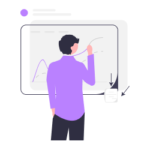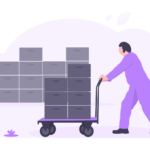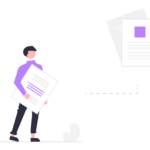B2B purchases aren’t easy: they tend to have longer sales cycles, multiple stakeholder involvement, trial and procurement stages, among other things that make the entire B2B buyer journey complex and difficult to understand and manage.
That’s why we invite you to the B2B buyer journey mapping world! It is a tool that helps you understand how your B2B customers make decisions and their experience with you.
It's all about figuring out what your clients want, need, and expect. By learning this, you can grow your business in amazing ways. We'll guide you through each step of this process and share tips and strategies to help you succeed.
Along the way, we'll explore how to identify critical stages in your customer's journey, understand their challenges, and provide solutions that satisfy their needs. Let's start this exciting journey to better understand your customers and boost your business growth.
Contents
What is the B2B buyer journey?

The B2B buyer journey stands for the process through which businesses go when deciding to purchase a product or service from another organization. Unlike an individual consumer purchase journey, this one is often much more complex and involves multiple decision-makers and a more extended deliberation period.
So, what are the distinctions between a B2B buyer experience and B2C?
- B2B purchases often have significant implications for the buyer's business, affecting operational efficiency, profitability, and competitiveness. That increases the importance of trust and reliability in the customer experience.
- B2B transactions rely heavily on building and maintaining long-term relationships. Personal interactions, understanding specific business needs, and providing tailored solutions are crucial.
- B2B buyers often require customized solutions tailored to their specific business needs. That demands a flexible approach to sales and service, focusing on consultative selling and personalized product offerings.
- The B2B buyer experience often involves a significant educational component, where suppliers provide valuable content to help customers understand products, technologies, and industry trends.
- Given the complexity and long-term nature of B2B relationships, post-sale support and service are critical components of the customer experience. It includes training, technical support, maintenance, and upgrade opportunities.
- While personal relationships remain essential, the B2B buyer experience is increasingly digital, with customers expecting seamless online experiences across websites, portals, and apps for researching, purchasing, and managing products and services.
- B2B companies often work closely with customers to gather feedback, address issues, and continuously improve products and services, fostering a collaborative relationship.
- B2B transactions may be subject to strict regulatory and compliance requirements, affecting how products and services are marketed, sold, and supported.
Why launch a B2B buyer journey mapping initiative?
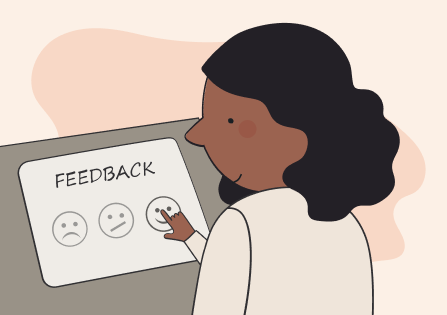
The B2B buyer journey, when understood and managed effectively, offers numerous benefits to companies that operate in the B2B sector. Here are some examples illustrating those:
- Improved product development and innovation
An industrial machinery manufacturer maps its buyers' journey and discovers that a significant pain point for customers is the prolonged downtime required to install and integrate new machinery into their existing production lines. In response, the company focuses on designing machinery that can be quickly installed and easily integrated with minimal disruption to production processes.
Read also: B2B empathy mapping.
Benefit: By aligning product development with customer needs, the company improves customer satisfaction and positions itself as a market leader in innovative solutions.
- Enhanced targeting and personalization
A SaaS company providing project management software uses buyer journey insights to understand that their primary buyers are IT managers in mid-sized tech companies. With this knowledge, they tailor their marketing efforts, such as targeted ads and personalized email campaigns, to address this group's specific pain points and interests, such as integration with existing tech stacks and scalability.
Benefit: This targeted approach leads to higher engagement rates, more qualified leads, and a better return on marketing investment.
- Efficient sales processes
A B2B financial services firm conducts a journey mapping exercise and uncovers that its clients frequently face delays in getting approvals for financial products and crave more personalized attention. To tackle these issues, the firm overhauls its sales process, implementing technology-driven solutions to accelerate the approval process for loans, credit lines, and other financial services. They also assign dedicated account managers to key clients.
Benefit: This leads to shorter sales cycles, higher customer satisfaction, and increased customer loyalty, as clients appreciate efficient and personalized service.
- Enhanced customer experience and satisfaction
An office supplies wholesaler uses B2B buyer journey insights to realize that businesses seek more than just products; they want comprehensive solutions. The supplier offers bundled packages and value-added services such as inventory management and next-day delivery.
Benefit: This differentiates them from competitors and leads to higher customer retention rates as clients value the convenience and additional services.
- Strategic decision-making
A commercial real estate company uses insights from the B2B buyer journey to understand that its clients value sustainability and modern amenities. This influences their property acquisition and development decisions.
Benefit: By making strategic decisions based on buyer preferences, the company attracts more high-value clients and strengthens its position in the market.
B2B customer segmentation — a step towards personas
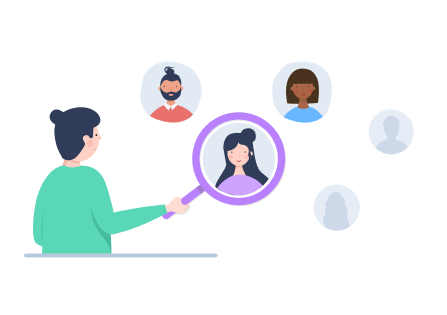
B2B customer segmentation is the process of turning a business's entire customer base into smaller-size groups. Customers in these group share some common characteristics. It always begins with B2B buyer journey research, where we gather information on B2B buyers, as it's essential to base our strategies on accurate data and actual consumer behavior.
When doing segmentation in B2B, it’s a good idea to consider factors like industry, company size, geographic location, purchase behavior, and decision-making processes.
For example, a software company might segment its customers into small businesses, mid-sized companies, and large enterprises. Each segment has unique needs and challenges: small businesses prioritize cost-effective solutions and ease of use, mid-sized companies seek scalability, and large enterprises focus on advanced features and customization options.
Another example is a professional consulting firm that could segment its clients by industry focus, differentiating between healthcare, finance, and technology industries, to offer specialized advice and solutions tailored to each sector's specific challenges and opportunities.
Each industry has specific requirements and standards that the manufacturer must consider when developing and marketing their products.
Segmentation is crucial in B2B as it helps businesses understand and cater to the specific needs of their diverse customer base. By segmenting customers, a company can develop targeted marketing campaigns, create more personalized experiences, and build stronger relationships, increasing customer satisfaction and loyalty. It also allows for more efficient allocation of resources, as businesses can concentrate their efforts on the most profitable or promising segments.
Once you've figured out how to segment your audience, the next step is to digitize and visualize the results by creating B2B buyer personas based on your segments. For instance, with a tool like UXPressia Personas Creator, your persona would be represented as follows:
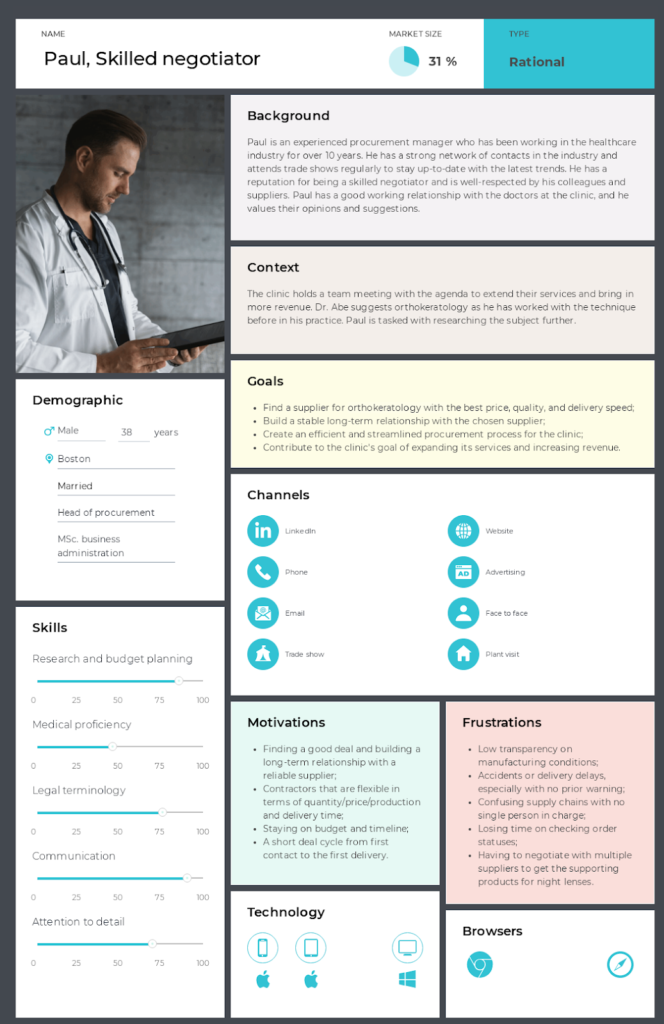
B2B buyer journey stages

A B2B buyer journey typically involves multiple stages, each representing a different part of the process a business goes through when dealing with a problem or new task, deciding on a purchase, making a purchase, and then using a product or service. Here are the typical stages with examples:
- Awareness stage
At this initial stage, a business becomes aware of a need or a problem. For instance, a marketing agency might realize that its client reporting process is too time-consuming and error-prone, indicating a need for a new software solution.
- Research stage
Once aware of their need, the business starts gathering information. In our example, the marketing agency would research various reporting software, read industry blogs, and attend webinars to understand the best solutions.
- Consideration stage
At this point, the business starts evaluating specific products or services. The marketing agency might compare different software tools, looking at features, pricing, integration capabilities, and user reviews. They may also engage in discussions with sales representatives and request demos.
- Decision stage
This is where the business makes its final decision. After evaluating different options, the marketing agency would decide on software based on costs, ease of use, and compatibility with existing systems. This stage often involves multiple stakeholders and can require the approval of senior management.
- Trial stage
In this phase, the business tests the software through a demo or trial period, evaluating its ease of use, compatibility, and overall fit with their needs. The marketing agency conducts this hands-on assessment to make an informed decision, involving end-users and IT staff to comprehensively understand the software's impact on their operations. This critical step helps verify the product's value before making the final decision.
- Purchase stage
Here, the actual purchase happens. The agency would negotiate terms, finalize the contract, and make the purchase. This stage might involve legal and financial teams reviewing contracts and terms.
- Training stage
Before full implementation, the agency focuses on educating its team about the new software. It involves organizing training sessions for staff to become proficient in using the software and understanding its features and functionalities.
The training stage is crucial for ensuring a smooth transition, minimizing disruptions, and maximizing the software's benefits. It may include workshops, online tutorials, and hands-on practice sessions (led by experts or software providers) tailored to the specific needs and roles of the agency's team.
- Implementation stage
After purchase, the business implements the solution. For the marketing agency, this would mean installing the software product, integrating it with existing systems, and training staff on how to use it.
- Active or Not So Usage stage
Following implementation, the agency enters a phase where the software's usage patterns become clear — ranging from active, regular use to sporadic or limited engagement. This stage involves monitoring how frequently and effectively the team utilizes the software in daily operations. It's a critical period for identifying any barriers to full adoption, such as usability issues or gaps in training, and for gauging the software's integration into the agency's workflow.
The insights gathered during this stage help determine if additional support or training is needed to encourage more consistent use or if the software fully meets the agency's operational requirements.
- Post-purchase evaluation
The business evaluates the performance and effectiveness of the purchase. The marketing agency would monitor how the new software impacts their reporting process, assessing whether it meets the expectations and needs that were identified in the Awareness stage.
- Renewal stage
Finally, based on their satisfaction and evolving needs, the business may decide to repurchase, renew, or upgrade the product or service. If the software has improved the agency’s reporting process, they might consider renewing their subscription or exploring additional features or services offered by the provider.
Understanding these stages helps B2B companies tailor their marketing and sales strategies to better meet the needs of potential clients at each point in their journey, ultimately leading to more successful conversions and customer relationships.
Mapping and optimizing the B2B buyer journey
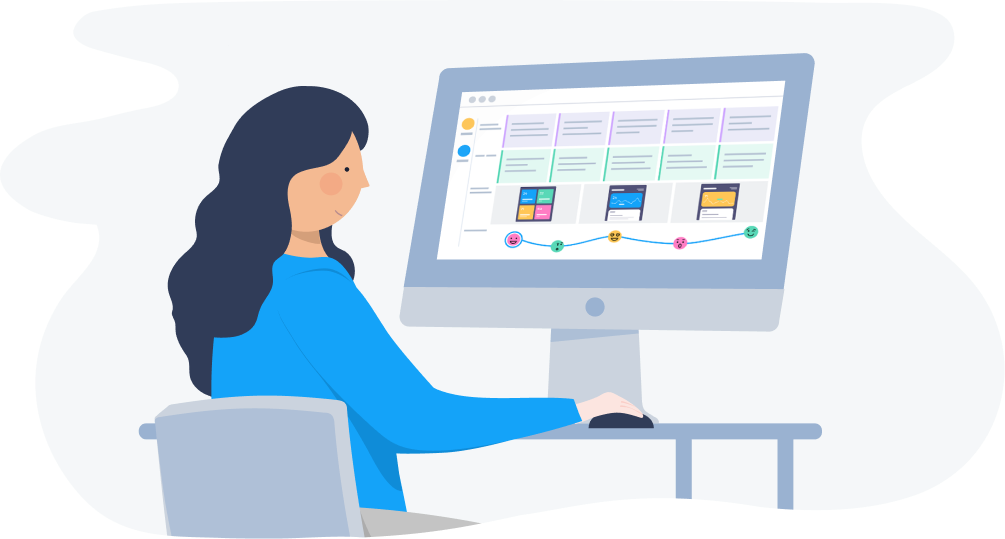
We've already explored the stages of B2B buyer journey mapping, so now is the perfect time to dive into the mapping process.
Beyond identifying the stages, deciding what information you'd like to capture for each stage in your upcoming map is crucial. Whether you prefer to draft it on paper, a whiteboard, or digitally, we recommend the digital format for its ease of sharing with colleagues worldwide, facilitating synchronous and asynchronous collaboration.
Your map's vertical axis will feature information blocks, while the stages will span the horizontal axis. These blocks could include the persona's actions within each stage, utilized channels, encountered challenges, solutions to those challenges, relevant documents, interface screenshots, and anything relevant to your context.
Read also: How to create a customer journey map.
Now, let's explore how mapping a B2B buyer journey can enhance the journey and the B2B customer experience through several hypothetical scenarios.
- Tech solution provider improves lead nurturing
Use case: A tech solution provider mapped their B2B buyer journey and realized that target persona leads dropped significantly during the Consideration stage.
Optimization: They identified a lack of targeted follow-up communications by analyzing the journey. To address this, they implemented a personalized email nurturing campaign, providing detailed information and case studies relevant to the solutions the leads were interested in.
Outcome: This resulted in a higher engagement rate, with more leads moving from the consideration to the decision stage, improving the overall conversion rate.
- Industrial equipment manufacturer enhances website content
Use case: An industrial equipment manufacturer noticed that many website visitors left the site shortly after arriving at the product information pages.
Optimization: Journey mapping revealed that the information on these pages was too technical and not user-friendly for decision-makers who were not engineers. The company revamped the content to include more accessible language, explanatory videos, and real-world application examples.
Outcome: This change increased time spent on the website, more inquiries, and a better overall customer experience.
- Software company streamlines demo process
Use case: A B2B software company found potential customers interested in their product but hesitated to request a demo.
Optimization: After mapping the B2B buyer journey, they discovered that the process of signing up for a demo was lengthy and complicated. The company simplified the demo request form and began offering pre-recorded demos alongside live sessions.
Outcome: The simplified process and additional demo options led to a higher number of demo requests and a better conversion rate in the later stages of the journey.
- Healthcare equipment supplier personalizes post-purchase support
Use case: Through journey mapping, a supplier of healthcare equipment identified that customers felt neglected after the purchase.
Optimization: The company introduced a personalized post-purchase follow-up program, where account managers would check in with customers regularly, offer training sessions, and provide tailored advice on making the most out of their purchases.
Outcome: This strategy improved customer satisfaction and increased customer loyalty and the likelihood of repeat purchases.
In each of these cases, B2B buyer journey mapping played a crucial role in identifying weak spots in the customer journey. By addressing these areas with targeted strategies, businesses could enhance the customer experience, leading to better engagement, conversion, and customer retention.
Wrapping up
In conclusion, mapping and optimizing the B2B buyer journey is transformative, replete with insights and strategic breakthroughs. This journey is not just about identifying a customer's steps; it's about delving into the nuances of their experience, understanding their needs, and anticipating their expectations. The true power of this journey lies in its ability to turn information into action - enabling businesses to create more targeted, effective, and personalized strategies that resonate deeply with their B2B customers.
From enhancing the relevancy of marketing efforts to fine-tuning product offerings, the meticulous journey mapping process empowers organizations to meet and even exceed customer expectations. It is a testament to the fact that in the complex world of B2B transactions, the most successful businesses listen closely to their customers and adapt with agility. Ultimately, the art of mastering the B2B buyer journey is an ongoing commitment to growth, innovation, and customer-centricity, paving the way for lasting business relationships and sustained success.
Ready to map your business’s B2B buyer journey?

